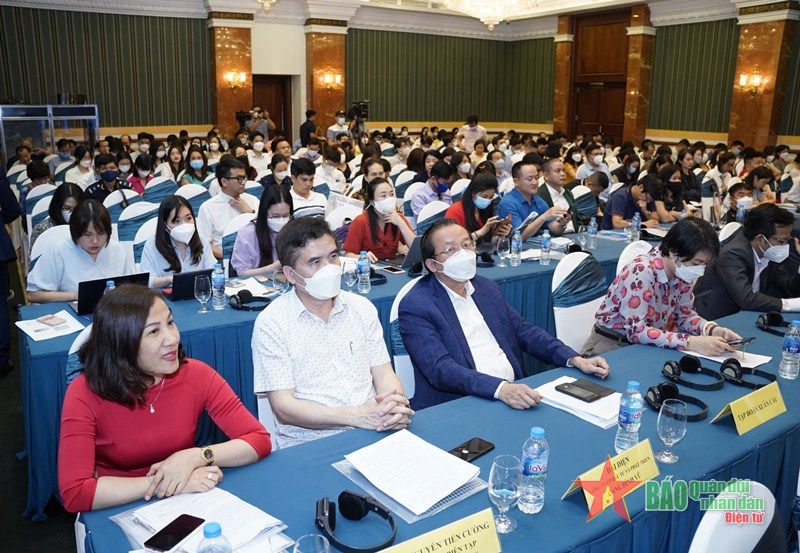During the discussion session on "Opportunities for the logistics industry post-pandemic" within the framework of the seminar "Enhancing the Competitiveness of Logistics Service Providers," held on the morning of April 28 in Hanoi, many speakers pointed out that the Vietnamese logistics market holds significant potential but still has limitations.
In a discussion themed "Opportunities for the Logistics Industry Post-pandemic" at the seminar, it was highlighted that the Vietnamese logistics market holds significant potential but also faces limitations. Currently, the majority of enterprises in the logistics sector in Vietnam are small and medium-sized, with 90% of registered businesses having capital below 10 billion VND. These logistics enterprises operate in various service areas such as transportation, delivery, and warehousing.
According to Ms. Pham Thi Lan Huong, CEO of Vinafco Joint Stock Company, the number of integrated logistics service providers (3PL, 4PL) in Vietnam is still limited. She mentioned that only 16% of total logistics businesses in Vietnam are 3PL and 4PL companies. Interestingly, a significant portion of this "logistics slice" is controlled by foreign enterprises.

Ms. Le Thi Ngoc Diep, Director and Head of the Commerce Department at SLP Vietnam Company, pointed out a constraint in the development of logistics. Vietnam has higher logistics costs compared to many countries worldwide, especially in comparison to some Southeast Asian countries like Thailand and Singapore, where logistics costs have decreased. This poses a barrier to Vietnam's competitiveness in the market. According to World Bank data, logistics costs in Vietnam range from 20.9% to 25% of GDP.
Mr. Winkerbauer Lars, Senior Advisor of IPP Air Cargo, echoed this view, stating that Vietnam's major obstacle is its high costs, which rank among the highest globally. Furthermore, 80% of the logistics market is controlled by foreign companies. Therefore, there is a need to develop the freight transportation market in this new period.
The year 2022 is forecasted to be a year of ongoing opportunities, favorable conditions, as well as intertwined challenges. Vietnam, however, possesses economic advantages that can boost production, exports, and logistics services as it is situated in a dynamically developing region of the world where trade flows are strongly concentrated. Therefore, both import-export and logistics in Vietnam have favorable conditions to continue to make breakthroughs, grow rapidly, and sustainably in the future.

Regarding positive assessments of the development opportunities in the logistics sector, speakers emphasized the necessity to implement a group of solutions for developing logistics infrastructure. This includes continuously reviewing, supplementing, and improving the overall planning of the dry port system, as well as reviewing, supplementing, and perfecting the comprehensive and detailed planning of the logistics center system nationwide.
Additionally, to keep up with market trends and achieve the goal of developing the logistics industry, Vietnam needs to develop more 3PL and 4PL companies to lead the logistics market.
Delegates also suggested that Vietnam needs to invest in developing a comprehensive transportation hub planning and have programs for technology solutions in logistics. It's crucial to enhance the connection among enterprises in the industry in a healthy manner.
Furthermore, Vietnam needs to promote the application of technology in the logistics industry to enhance efficiency, optimize operational productivity, and save operational costs for businesses. Tighter integration among development and logistics operations entities like manufacturing units, warehouses, and transportation is essential for improving operational efficiency. Encouraging investment in Vietnam's logistics market is also emphasized.
Cre: qdnd.vn




